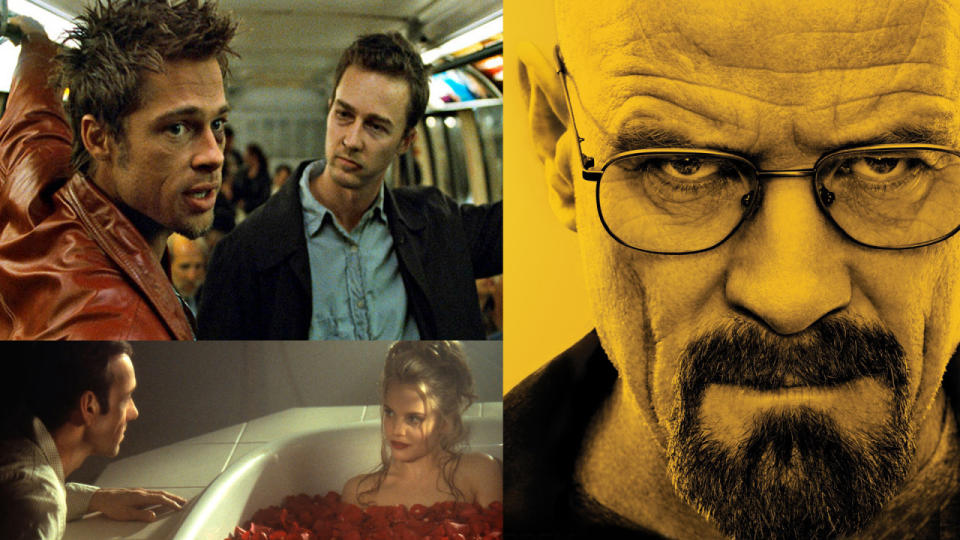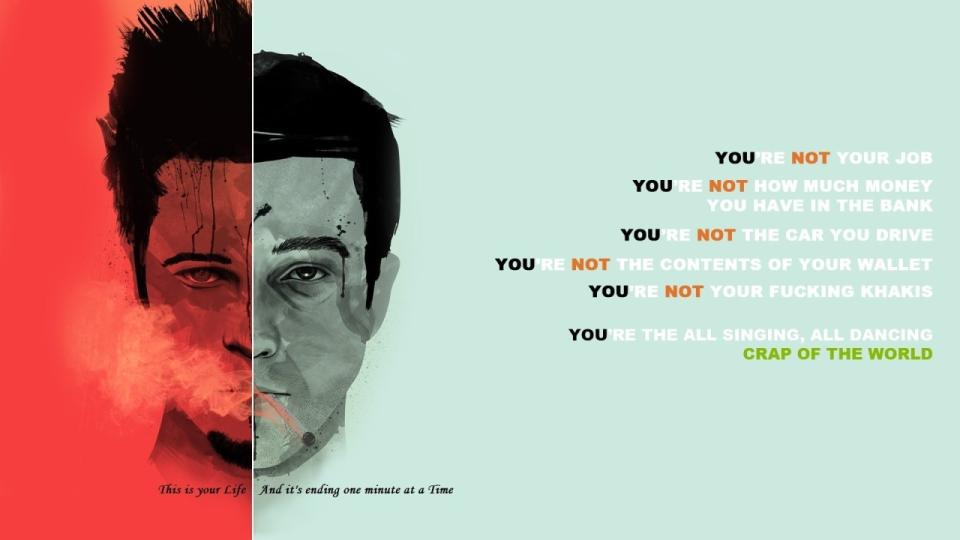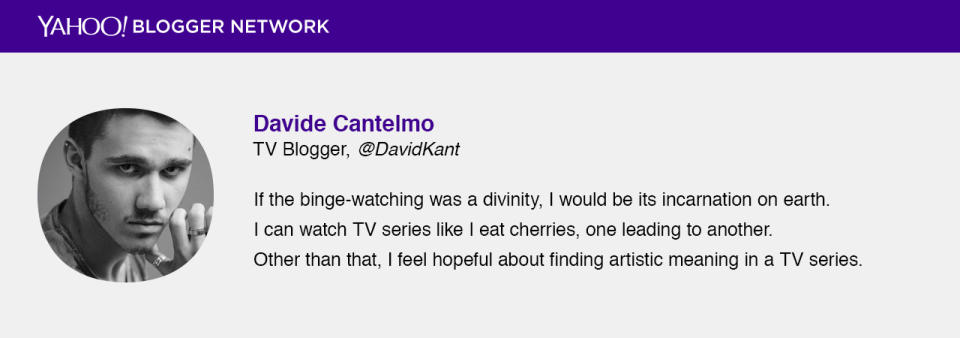Fight Club, American Beauty, Breaking Bad: A Journey of this disillusionment
Most of us would say a boring office job is a better life choice than fast-food worker, pedophile, anarchist, or freedom fighter in a post-apocalyptic hellscape. Not Hollywood in ’99.


This article is rated ’S’ for SPOILERS.
There’s a common theme that sparked back in the 90s and that continued to develop until present days. This very simple and yet revolutionary idea was born between the pages of one of the greatest books of modern literature and eventually made it to the big screen.
Fight Club was probably the first story that tried to explain what was oppressing society in the last segment of the 20th century.
Depression mostly, but explaining it this way would mean simplifying the whole idea. Chuck Palahniuk’s novel shows us a character (Jack, who is unnamed in the movie) so depressed and stuck in his routine that his mental illness brings him to create a different version of himself that is able to accomplish everything he hasn’t.
Edward Norton, skilfully playing the narrator of the story, is forced to alternatively fight and collaborate with this different version of himself - Tyler Durden - who tries so hard to shake Jack’s life.
This is the tale of the modern man’s crisis: a random human being that lives unrelentingly the routine of their own life. Doing a job he doesn’t like, buying things he doesn’t need, with money he doesn’t have to impress people he doesn’t like.
It is all a critique towards to post-modern society, which is founded on the promising lie that a solid but repetitive office job is the only thing that will make us feel satisfied in life.

The message Hollywood was trying to give us was that comfort is not always the best solution and that trying to free ourselves is the real key to enlightenment and happiness.
American Beauty, screened in theatres the same year (1999), follows the actions of Lester Burnham (Kevin Spacey): he is a 42-year-old father who’s going through a middle-age crisis and falls in love with his daughter’s best friend. The event compromises the stability of the whole family and brings unpredictable consequences to the story.

What do American Beauty and Fight Club have in common? They’re both describing the modern man’s crisis. Their protagonists are middle-aged man who dislikes the fact that he is employed at a stable, well-paying, (and yet ultimately) boring job. The routine that this way of living has built is compromised when each protagonist realises they have been living this way for far too long. Edward Norton and Kevin Spacey’s characters are sick of being seen as ‘losers’ from their families and friends and each of them elaborates their own way — consciously or unconsciously — of escaping reality.
The message Hollywood was trying to give us was that comfort is not always the best solution and that trying to free ourselves is the real key to enlightenment and happiness.
The Matrix is developed on this exact same theme who takes this basic concept to the extreme of reality in the science fiction genre.
And then, 2008 came.
Nine years later, the theme that shaped so drastically Hollywood’s agenda was back again on television this time. Since 1999, TV series had replaced movies in representing the American way of living. Where movies couldn’t arrive anymore, Breaking Bad could.
Vince Gilligan’s TV series presents the same shared values of Chuck Palahniuk’s novel and American Beauty, enriched with a new power. Where Fight Club’s narrator was subconsciously forced to create an alternate version of himself and Lester Burnham to take on the social rules of the 90s American society, Walter White breaks free quite differently.
He is a chemistry teacher who has spent his whole life watching the people who were close to him succeed and his immense talent going wasted.
The equivalent of the middle-age crisis comes to Walter White in a different manner: he is diagnosed with lung cancer.
This is the crack point when he reaches a momentum of enlightenment and decides to change his life’s direction.
To sum up: he enters the drugs’ market by handling the cooking aspect of a particular and expensive substance: the blue methamphetamine. He becomes famous thanks to his skills as a cook and eventually breaks through the empire business of the drug dealing.

Walter White is a man who’s tired of his life, just like the characters from Fight Club and American Beauty, but who hasn’t had the strength to do something about it for most of his life.
The cancer that hits him is the Tyler Durden of the situation. It gives him the chance to deal with everything he has ever wanted.
Having an expiring date has given him the ability to live the moment and forget about the consequences in a new enlightened way that Fight Club’s narrator never had.
Both him and Lester Burnham were guided by unconscious forces, whereas Walter White operates with complete awareness of his means and goals.
Walter White is a far more easy character to identify with. He is given the possibility of acting like everyone has always dreamt of. It’s not about all the killing and the bad things the man does in his growing path as a well-rounded character. It’s about breaking all the social conventions that keep societies united but that limit everyone’s freedom.
What I see different, is the step that Breaking Bad takes forward in the structure of its character.
“I did it for me. I liked it. I was good at it. And I was really – I was alive.”
With this line, it’s almost as if Walt completes his journey from Mr. Chips to Scarface and then moves back a little bit toward the good man that he once was.
What differentiates Breaking Bad’s character is his self-awareness of drifting away from the common pattern. He doesn’t fall prey to any middle-age crisis or dissociative identity disorder. Instead, he makes what initially was a curse, his own gift.

 Yahoo News
Yahoo News 

